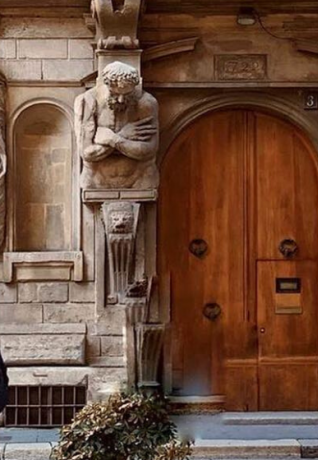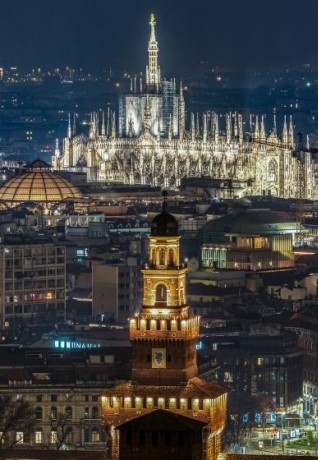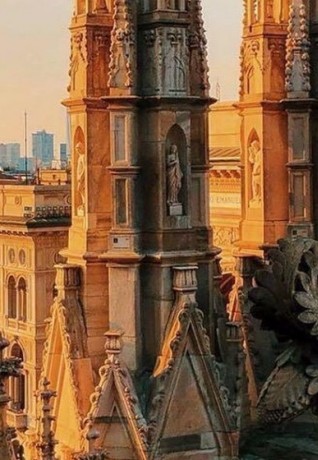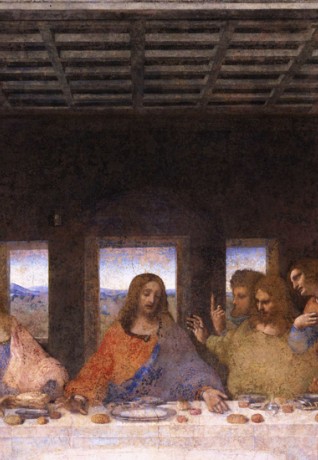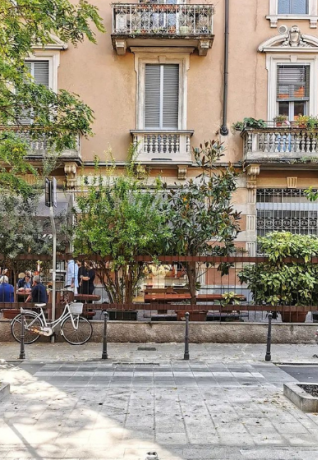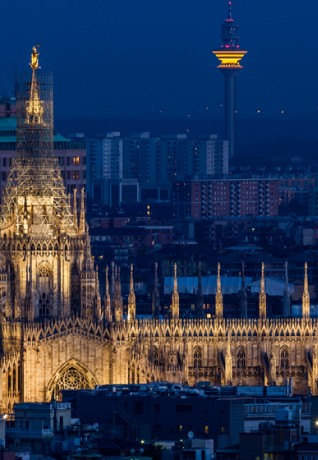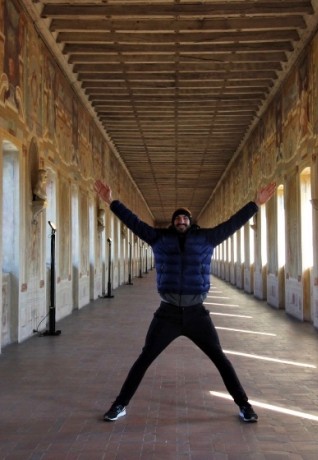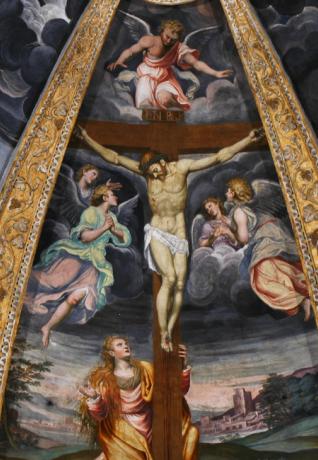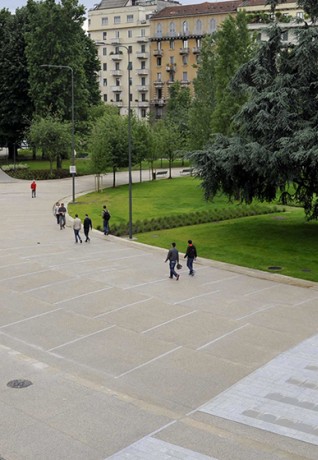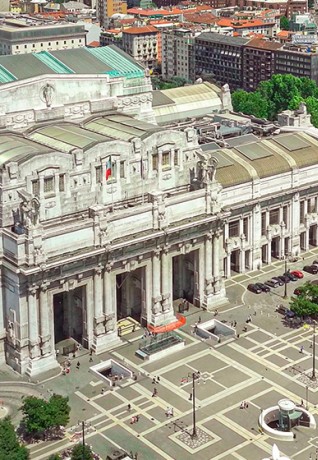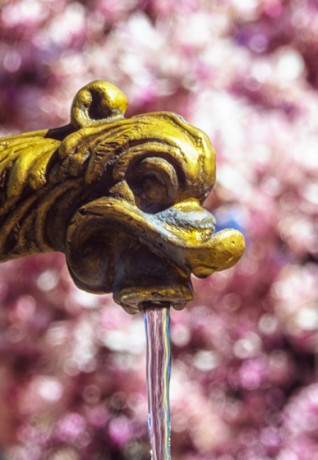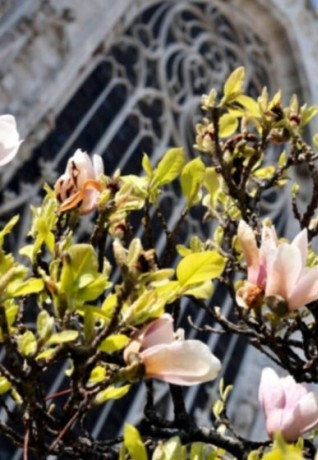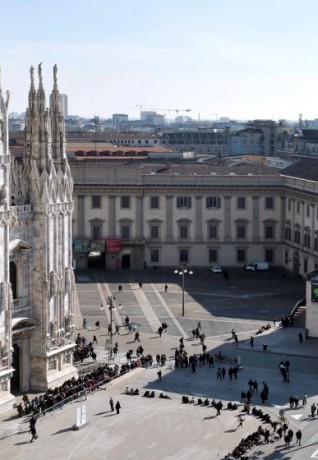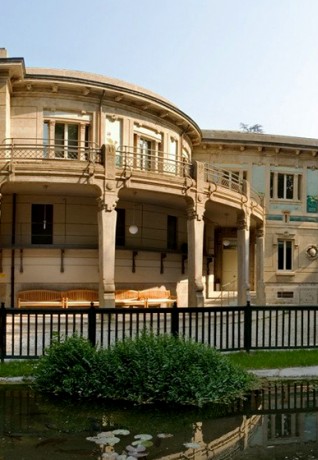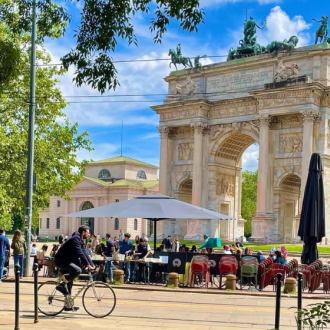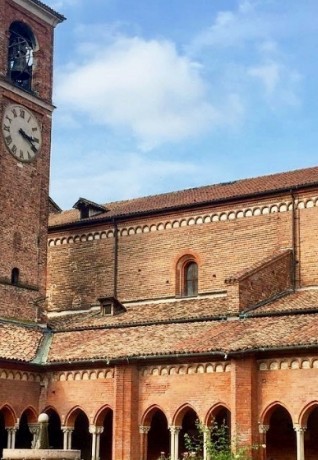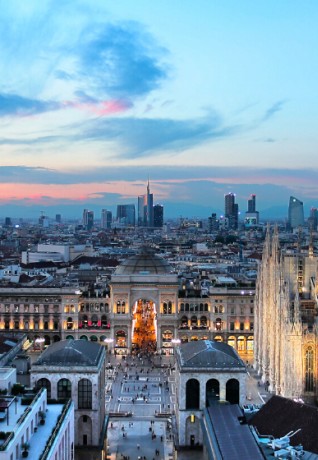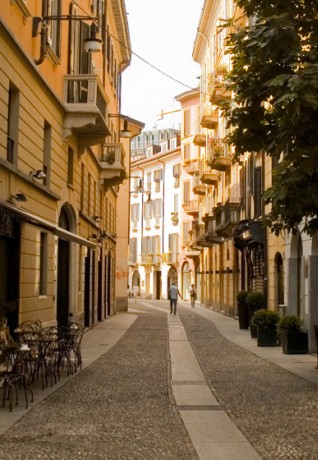A super-scary itinerary
Ghosts and serial killers in a thrilling city tour!
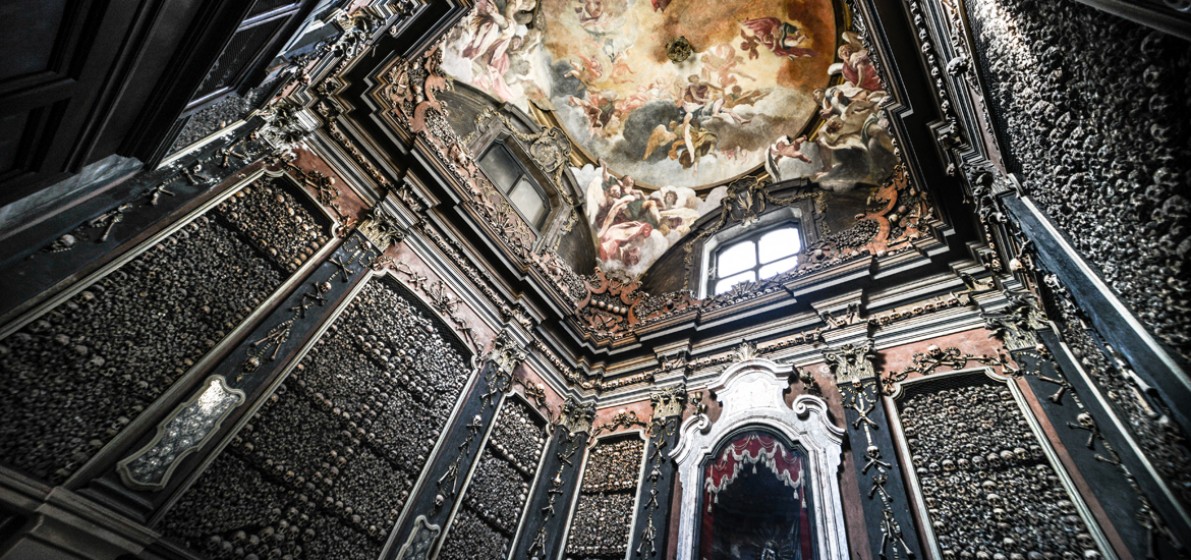
- 1. Piazza Vetra and the burning of witches
- 2. San Bernardino alle Ossa and the danse macabre
- 3. Pinacoteca Ambrosiana and its illustrious ghost
- 4. The first serial killer in via Bagnera
- 5. The ghost of the Lady in Black in Parco Sempione
- 6. The Monumental Cemetery tombs
- 7. The witches of Via Laghetto
- 8. Flayed San Bartolomeo and Carlina's ghost in the Cathedral
- 9. Column of the Devil in Sant'Ambrogio
- 10. The horned Madonna in Cappella Portinari
- 11. Lady with an Ermine in Palazzo Carmagnola
Whether on Halloween or not, how about venturing out on an unusual tour of the ‘scariest’ places in Milano? Steel your nerves and get ready to wander the piazze, churches, parks and historic buildings in pursuit of ghosts and horror stories. Brr… bet you can already feel a shiver running down your spine!
All the most ancient and important cities have a ‘cursed’ or ‘feared’ place where the executions of those who were convicted of heresy were carried out. In Milano that place is Piazza Vetra, located behind the ancient Basilica of San Lorenzo. Its name probably derives from the fact that leather tanners once worked in this area. They were called vetraschi because they scraped hides with pieces of glass (vetro) and then rinsed them in the muddy waters, which was why the piazza was well known for its foul smell.
Nowadays, visitors can enjoy a wonderful view of the rear of the church: but those who arrived there for their final crossing of the Vetra canal (now interred) certainly did not enjoy the view as they made their way to the gallows.
In this spot, witches and those condemned by the Holy Inquisition of Milano were charged with consorting with the Devil, condemned and then burned at the stake. The first ‘witch’ to be punished was Sibilla Zanni in 1390, and the last executions of this kind took place in 1641.
Commoners accused of other serious crimes met the same fate, such as Gian Giacomo Mora - who worked as a barber in the San Lorenzo district - and his friend Guglielmo Piazza, both accused of being plague spreaders. Alessandro Manzoni tells their tale in his manuscript Storia della colonna infame (History of the infamous column). The column in question was standing on the spot where the barber's shop once stood but was subsequently razed to the ground after his conviction.
The executions continued until the nineteenth century when, mercifully, they were abandoned and the piazza became a normal city square like many others.
But its story is kept alive in a popular song still sung today linked to the Milanese Mala or underworld, la ligera, which mourns the death of a young hooker - Rosetta - who worked in this piazza: it is said that she died due to brutal police beating.
“Hanno ammazzato un angelo:
di nome la Rosetta.
Era di piazza Vetra,
battea la Colonnetta”
(They killed an angel:
named Rosetta.
She was from piazza Vetra,
You could find her at the Colonnetta)
If you want to read the whole story of Rosetta, just look for the lyrics of the song La povera Rosetta.
So, with witches, victims burned at the stake and alleged plague-spreaders, be careful if you decide to take a stroll around this piazza!
Where: Piazza Santo Stefano
Wall embellishments created out of human skulls and vertebrae, door frames embedded with femurs and ulnae... it looks more like the set of a horror film or something out of the Addams family story, but it is actually one of the strangest, and most morbidly fascinating, holy places in Milano: the Ossuary of the Church of San Bernardino alle Ossa. It is very close to the Duomo so if you are in the mood for something really different, take a chance and call in…
The ossuary chapel is accessed by a narrow atmospheric corridor immediately to the right of the church entrance.
The walls are almost entirely covered with human skulls and bones, placed in niches and on the cornices, pillars and doors. Skeletons are also used as wall decorations. It is presumed that the exhumed bones are those of the deceased from the ex-Brolo leper hospital and the now forgotten seventeenth-century cemeteries.
The skulls enclosed in the cases above the entrance door are from offenders condemned to death by beheading.
According to legend, on November 2nd, All Souls Day, a little girl, whose remains rest in the ossuary’s altar, comes back to life and coerces the other skeletons to join her in a macabre dance.
Where: Piazza Pio XI, 2
Alongside immortal masterpieces such as Caravaggio's Fruit Basket and Leonardo's Codex Atlanticus, Pinacoteca Ambrosiana houses an unusual memento in a precious display case: a long lock of golden hair snipped from Lucrezia Borgia, Duchess of Ferrara.
During the nineteenth century, it became a relic of sorts, engendering an almost fetishist passion that entranced quite a few writers and poets visiting Milano, such as Lord Byron and Gabriele D’Annunzio.
Legend has it that, on All Souls Night every year, the Duchess’ spirit glides through the Pinacoteca in search of the display case containing her hair, a weapon of seduction and a symbol of vanity. Once she finds it, she washes and combs it as she did when she was alive, which explains why it is still so beautiful, soft and glossy.
Milano also has its very own Jack the Ripper, and his crime scene is one of the narrowest streets in the centre of Milano, perfect for a horror film: Via Bagnera.
It is where Antonio Boggia, Milano’s first serial killer in the mid-nineteenth century, hid in a cellar the bodies of three victims.
Boggia was a stoker who lived at 2, via Nerino and everyone described him as a quiet, normal man. However, when he started rummaging around with bricks and sand in via Bagnera, he aroused the suspicions of a local elderly accountant who had heard of the disappearing of people. He decided to follow Boggia but he was discovered and the criminal attacked him with an axe. The elderly man, however, managed to escape and was successful in having the serial killer locked up in a criminal asylum for some time.
A few years later, Boggia was definitively imprisoned for life, following the disappearance of a widow whose corpse was found decomposed and walled up in the basement of her apartment - where the killer was working as a bricklayer! Further investigation led to the discovery of three other corpses in the cellar in via Bagnera.
So, keep an eye out when you walk this way… if the walls could speak, they could tell some very scary stories!
So many horror movie scenes are set in parks at night, with mist rising to create that extra special tense atmosphere. So, it comes as no surprise to know that Milano also has its own haunted park, and it’s not just any park: it is huge Parco Sempione, behind Castello Sforzesco.
Most Milanese know the story of the ghost of a lady in black, or Dama Velata, who has appeared several times at the corner with Via Paleocapa since the end of the nineteenth century. She is a beautiful woman, tantalisingly covered by a long black veil from head to toe, which smells of violet to bait unsuspecting young people who wander around the park on cold foggy nights. She lures them to a mysterious building on the edge of the park and, after having seduced them, she removes her veil to reveal a face that is only a macabre skull.
Those who managed to escape either went crazy or were never able to find again the mysterious villa where they were taken.
Where: Piazzale Cimitero Monumentale
Cemeteries are doubtless at the top of the charts for scary places! So, naturally, we’re including the most beautiful cemetery in Milano - the grandiose Monumentale, a real open-air museum. Many of the tombs were created by some of the greatest artists who worked in Milano through the centuries, so we advise you to wander through its avenues admiring images that are often poignant and beautiful, and sometimes scary.
Don’t miss a tomb that is well-suited to the theme of this itinerary: the Rossetti tomb, in which the two spouses are depicted seated on two benches… but are headless. This misfortune was actually caused by the World War II bombings, which blew the heads off the statues whilst keeping the rest intact!
The official Monumentale website provides many options to explore the 250,000 sqm open-air museum.
As the plague raged throughout Milano, there was an area of the city that seemed to be mysteriously untouched: Via Laghetto. There was a small lake here where barges docked to unload the marble blocks for the construction of the Duomo, which were transported by water along the canals from the quarry.
Not one single person fell ill in the houses around this small landing place, so rumours began to spread that witches dwelt here. Sorceresses who, with their spells and potions, managed to keep the danger away. In particular, there was talk of the witch Arima, who led all the other witches of the neighbourhood in rooftop dances and celebrations.
However, in all likelihood, it was the marble or coal dust which was dumped here that killed the mice fleas, the main means of contagion.
Milano's Duomo is a never-ending discovery so, obviously, it cannot be left out of this particular itinerary. Among the 3400 statues that decorate both its interior and exterior (the highest number ever for any cathedral) you will see many monstrous figures, mainly functioning as gargoyles or rainwater drains. Spotting these winged monsters, snakes and dragons is a favourite activity for children when visiting the cathedral.
But there is more than just these scary figures: in the right-side transept, near the exit door, stands a statue that can be defined as truly horrorifing: the fascinating statue of the flayed St. Bartholomew.
At first sight it might look as if the saint has a cloak draped over his shoulders but, in fact, that is his own skin. According to tradition, St. Bartholomew, a disciple of Jesus, was flayed alive. The skinned body, therefore, depicts the muscles and blood vessels of his body almost like an anatomical study, with surprising and scary realism.
This striking statue aroused so much interest that it was moved from its original external position to the interior of the Cathedral, in a suitable place where it could be better admired. To this day, it is one of the most popular attractions for both the Milanese and tourists.
Last but not least, majestic Duomo can also lay claim to a phantom, namely Carlina, the unfortunate bride who, when visiting the roof terraces, fled screaming and fell among the spires because she was gripped by the remorse of expecting a child from a man who was not her husband. She was never found again.
Legend has it that even today she appears in the photographs of the spouses taken in Duomo, enveloped in a black dress, which was her wedding dress worn to deceive the feudal lord and prevent him from demanding ius primae noctis, i.e., the right to lie with the new bride on the wedding night. But do not fear her: it is said that her apparition is to wish the happy marriage she herself never had upon the young people in whose photos she appears.
Where: Piazza Sant'Ambrogio
Another important church in the city has a gripping tale to tell: the Sant’Ambrogio Basilica. Outside the basilica stands a pillar called the ‘devil’s column’ and according to legend, the two holes on the shaft of the column were created by the devil's horns as he was thrown against it in a struggle with St. Ambrose on this very spot.
It is said that the acrid smell of sulphur exudes from the holes and that, if you put your ear to them, you can hear noises from Hell! The question is… do you have the guts to go and listen?
Where: Piazza Sant'Eustorgio 1
The Ticinese area is not only known for Piazza Vetra: if you walk on walking a little further towards Darsena you will reach the Sant’Eustorgio Basilica, where a really weird painting is kept, considered ‘demonic’ by some.
Entering the Portinari Chapel, an outstanding example of Renaissance architecture in Milano, housing the tomb of San Pietro Martire (Saint Peter Martyr), on the south wall you will see a horned Madonna.
This fresco depicts the Miracle of the False Madonna: according to legend, as he was celebrating Mass, Saint Peter saw the devil appear on an icon of Mary placed on the altar. Others believe that he saw the devil appear in the guise of the Virgin. Whatever the case, the devil ‘forgot’ to hide his horns, which obviously unmasked him.
By lifting and offering the consecrated host to the devil, the Saint was able to drive him away.
Where: 7, via Broletto or 2, via Rovello
One of Leonardo da Vinci's most famous paintings is the Lady with an Ermine, but few know that the portrayed woman is linked to the history of Milano.
Cecilia Gallerani was mistress to the Duke of Milano, Ludovico Sforza known as il Moro.
It is said that if you go to no. 7, Via Broletto or no. 2, via Rovello and look up towards the windows of Palazzo Carmagnola, you can still see the ghost of Cecilia in a white dressing gown, looking out waiting for her loved one from the place where she once lived.

 Log in
Log in


